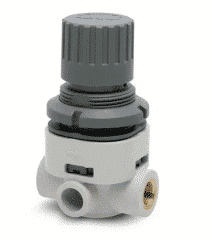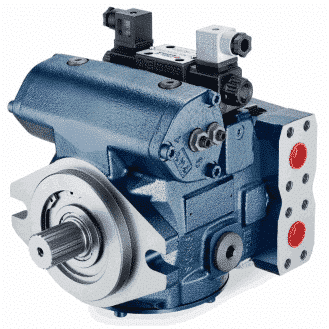
CAMOZZI pressure regulator
The most common pressure regulators on the market are diaphragm pressure regulators.
The diaphragm pressure regulator comprises a screw, a spring, a valve, and a diaphragm. The principle of this regulation is based on the balance of forces on either side of the diaphragm: on one side, the spring compressed by the screw, and on the other, the downstream pressure of the fluid. The slightest variations in pressure are immediately corrected by the regulator. When the pressure drops, this disrupts the balance of forces on the diaphragm. As the force of the spring becomes greater than the force exerted by the fluid pressure, the valve opens, the outlet pressure rises, and reaches its new equilibrium. Conversely, when the downstream pressure increases, the force exerted by the fluid against the diaphragm compresses the spring and closes the valve.
With this type of regulator, upstream pressure fluctuations do not affect downstream pressure.






